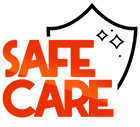Lamps with type C ultraviolet radiation (UVC) are devices used to disinfect surfaces and air by destroying microorganisms. In this guide, we will explore how UVC lamps work, their health benefits and how they can be used effectively.
1. How do UVC Lamps Work?
a. UVC radiation
- UVC lamps emit short-wavelength radiation (between 200 and 280 nanometers).
- This radiation is known for its ability to destroy the DNA and RNA bonds of microorganisms, such as bacteria, viruses and molds.
b. Efficiency of Microorganism Destruction
- UVC radiation penetrates the cell wall of microorganisms and affects their DNA, preventing their ability to replicate and survive.
- This means that UVC lamps can quickly and efficiently destroy a wide range of pathogens.
2. Benefits of UVC Lamps for Health
a. Efficient Disinfection
- UVC lamps are extremely effective in destroying bacteria, viruses and other pathogenic microorganisms.
- They reduce the risk of infection and the spread of diseases through contaminated surfaces.
b. Non-Chemical Use
- It does not require the use of aggressive chemical substances to achieve disinfection, which makes them an ecological and safer option for use.
c. Versatile Applicability
- They can be used in various environments, including hospitals, clinics, laboratories, treatment units and even in homes or offices for regular disinfection.
3. Correct Use of UVC Lamps
a. Safety of Use
- UVC radiation can be harmful to the skin and eyes. Make sure you follow the safety instructions provided by the manufacturer.
- Avoid direct exposure of the skin and eyes to UVC radiation during lamp operation.
b. Exposure Time and Distance
- Exposure time and distance from the disinfected surface are critical for the effectiveness of disinfection.
- Usually, UVC lamps require direct exposure and a certain period of time to ensure the efficient destruction of microorganisms.
4. Practical Applications of UVC Lamps
a. Surface Disinfection
- Used to disinfect tables, desks, medical instruments and other surfaces that may be contaminated with pathogens.
b. Air Disinfection
- They can be integrated into ventilation systems or used as portable units to disinfect the air in closed spaces.
c. Personal Use
- Portable devices or hand lamps for disinfecting personal items, such as mobile phones, keys and other personal items.
5. Additional Considerations
a. Standardization and Certification
- Check if the UVC lamps comply with the applicable standards and regulations for safety and effectiveness.
b. Costs and Efficiency
- Calculate the acquisition and operating costs in relation to the benefits offered to determine the right investment for your needs.
Conclusion
UVC lamps are efficient and essential tools for disinfecting and maintaining a healthy environment. Understanding how they work and applying them correctly can significantly contribute to preventing the spread of infections and protecting your health and those around you. Make sure you always follow the safety measures to use UVC lamps in a safe and effective way.

